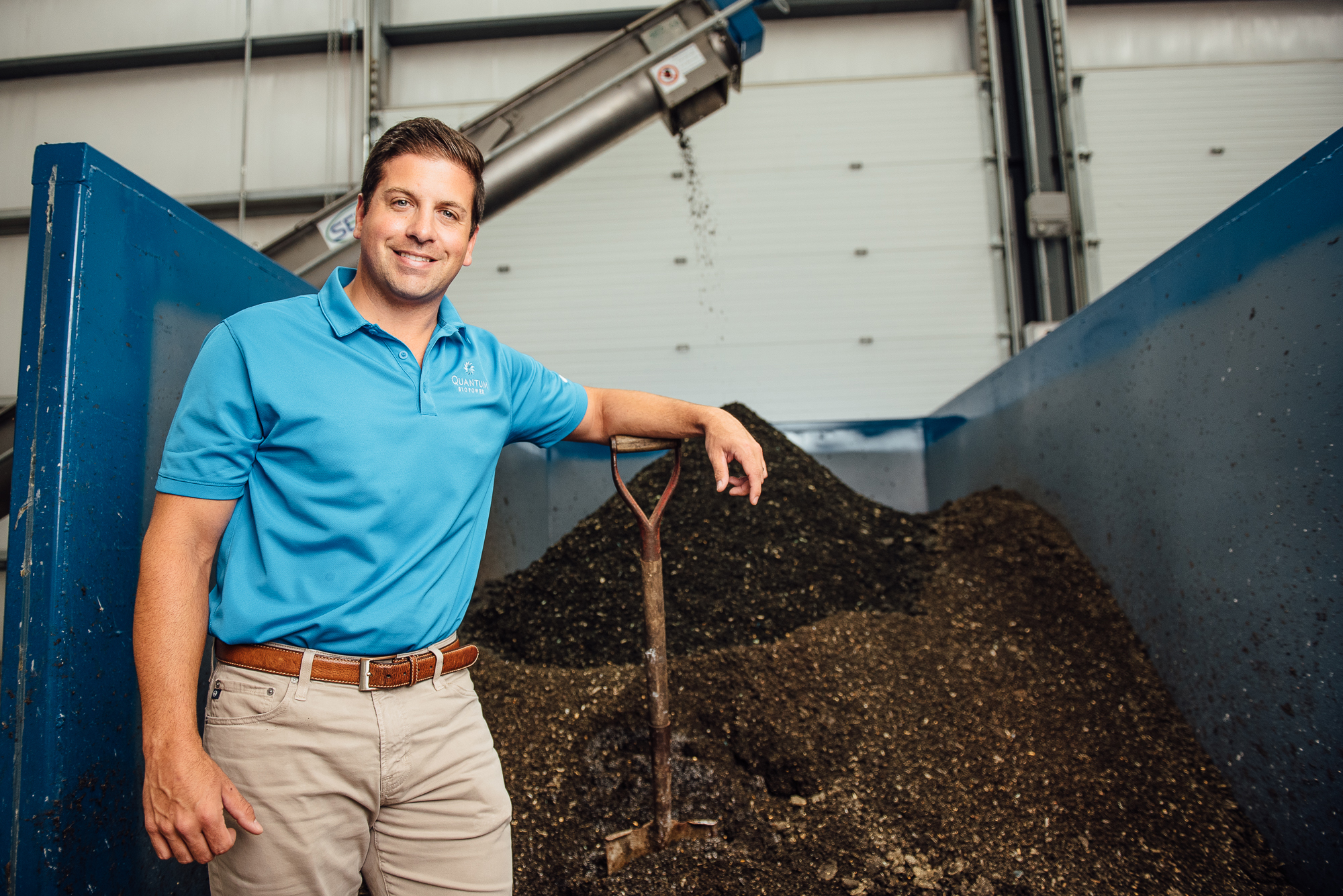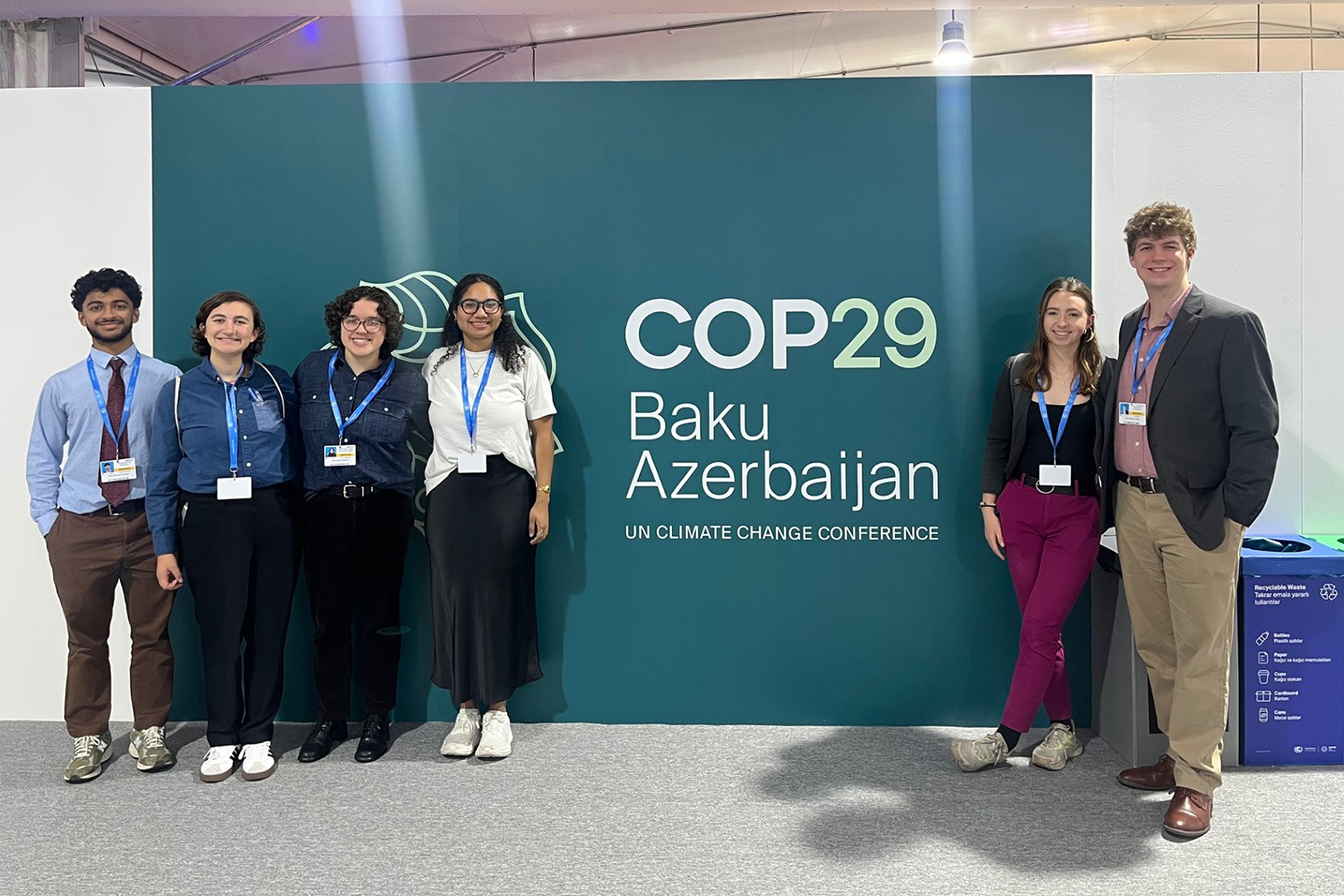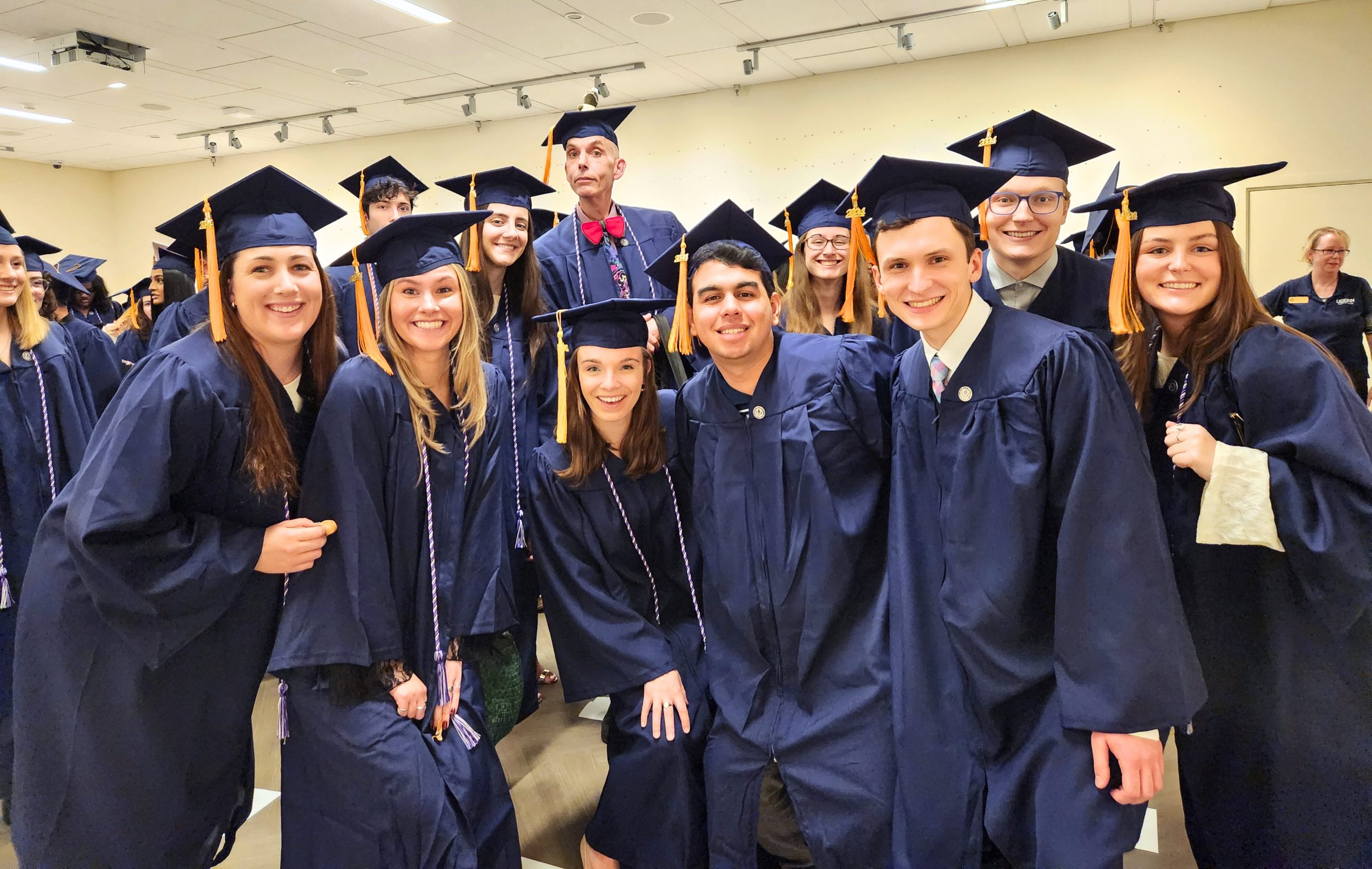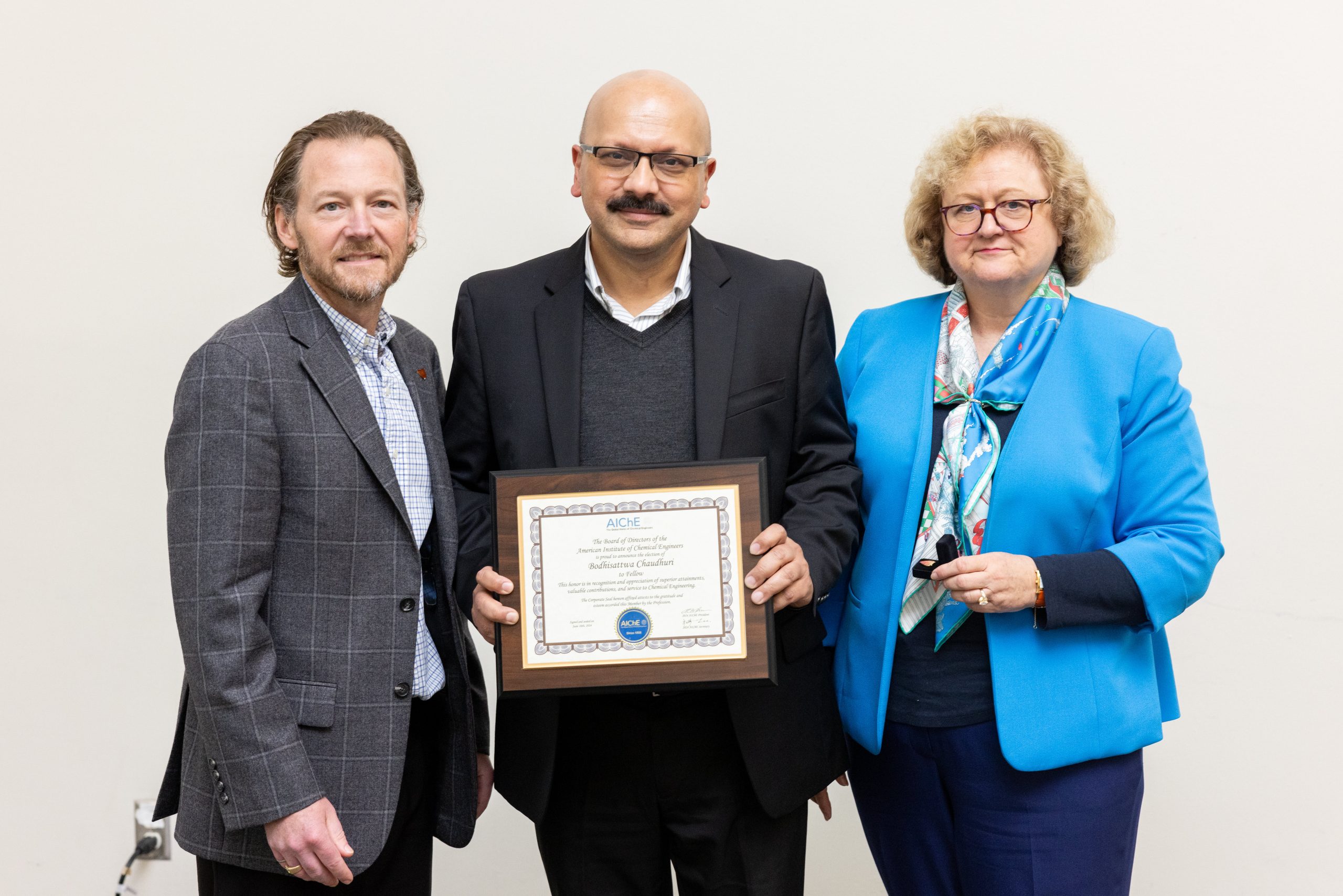When a truck carrying 78,000 pounds of frozen chicken crashed on I-91 in Meriden, Connecticut, last summer, the food was deemed unsafe to eat and had to be destroyed.
A year prior, the chicken would probably have been incinerated.
But thanks to Quantum Biopower, the state’s first waste food-to-energy plant, the inedible chicken wasn’t a complete loss. It was turned into high-quality fertilizer for farmers, as well as energy to power the police station, firehouse, and other municipal buildings in Quantum’s hometown of Southington, Connecticut.
The man at the helm of this revolutionary technology is Brian Paganini, Quantum’s vice president and managing director, and a 2003 alumnus of UConn’s School of Business.
We’re unlocking the value in the waste stream. — Brian Paganini '03 (BUS)
And while Paganini is excited to operate Quantum, which is one of only a handful of food-recycling facilities in the country, he is still taken aback by the volume of food waste that Americans accept as normal.
“It’s truly been an awakening for me. People say that America is a ‘throw-away’ society!” he says. “Well, it is staggering what we throw away.”
Wasted food is the biggest contributor to American landfills, according to the EPA. As much as half of all U.S. produce, some 60 million tons, is thrown away, much of it edible but imperfect. The average American family of four discards nearly $1,600 worth of produce a year, according to the U.S. Department of Agriculture.
Paganini is pleased to be able to offer a sustainable solution.
“To lead a new industry in the United States is both a humbling and exciting experience,” he says. “There’s not a day I don’t wake up without a sense of purpose and worth.’’
He believes the business he has started here in Connecticut will help transform the way the country will handle its waste for years to come. “Thirty years from now,” he says, “this will no longer be a novel form of recycling, it will be mainstream.”
Connecticut Leads the Way in Food Recycling
In 2011, the Connecticut legislature passed a food-diversion act, requiring large facilities, including hospitals and hotels, to segregate food waste from the rest of the trash. Yet at that time, there was no facility capable of recycling it. That was the origin of the idea for Quantum.
“The Quantum Biopower facility is a ‘first of its kind’ in our state and will make a real contribution to meeting both our waste reduction and energy goals,’’ says DEEP Commissioner Robert Klee. “Our agency is pleased to see new ideas and technologies coming online that are providing innovative solutions to environmental and energy issues that we have been working to address.’’
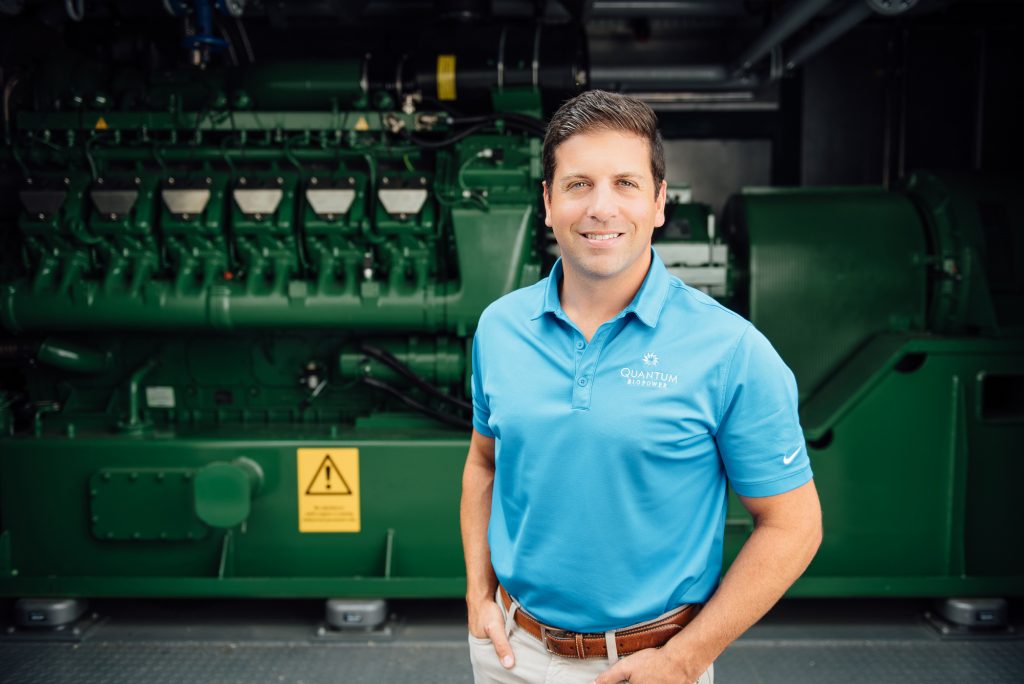
Quantum, a $14 million facility located on 60 acres not far from Interstate 84, started operations in December 2016. It now accepts up to 140 tons of food waste a day. The food can range from expired meat, bread, or bakery items to cafeteria waste or spoiled food from a commercial freezer.
Whole Foods, Dunkin’ Donuts, the Hartford Marriott Downtown, Yale University, and several supermarkets are among Quantum’s customers. Some 100 households in West Hartford are also piloting a program to separate food waste, which will be transported to Quantum Biopower.
By 2020, the state regulations will broaden to include small restaurants, some school systems, and other food producers. The state’s goal is to remove up to 60 percent of food waste from the traditional waste stream by 2024.
The disposal fees for Quantum are about 20 percent less than commercial garbage fees, providing an incentive to customers. Commercial haulers collect and deliver the food waste to the facility.
Paganini says the sustainability and green energy industries are exploding, and the prospect of being ‘green’ and saving money is appealing. “We’re unlocking the value in the waste stream,” he says.
He believes food waste recycling is the way of the future, and that Connecticut is leading the charge, along with New Hampshire, Vermont, and California, with New York and Massachusetts following suit. “But in Europe,” he notes, “they’ve had this technology for years. It is surprising to me how much the United States lags behind.”
Born into Business
Paganini learned some of the fundamentals of running a business during his childhood, lending a hand at his parents’ Terryville TrueValue Hardware.
It was a formative time in his life, says Paganini. The lessons he learned about business, customer service, clear communication, and the importance of family have remained with him today.
After graduating high school, he was accepted to UConn, his top choice, and in 2003 he earned a bachelor’s degree in business administration.
“UConn taught me how to think, how to ask questions and be inquisitive, and to seek answers,’’ he says.
UConn is also where he met his wife Lindsay, a human development and family studies major, and they frequently return to campus with their two children, often visiting the UConn Dairy Bar where Paganini once worked.
“Even today when I get back on campus, there is this energy. It’s palpable,” he says. “I love going up there. It’s like recharging your batteries.’’
After graduation, Paganini went to work for pharmaceutical giant Pfizer, and spent a decade in sales operations and management.
Despite his success in the corporate world, he felt there was something missing. “At the hardware store we could have an immediate impact on our customers,” he says. “I think that was the element that was missing in my work life.’’
A family friend told him about entrepreneur Kevin Boucher, who wanted to start a food-to-energy plant. Boucher was already invested in recycling and owned a company that manufactured compost, playground fiber, and mulch.
Paganini was enthusiastic about the opportunity. But it took more than three years of hard work to design the complex, and earn the regulatory permits required, before opening the facility in December 2016.
Just seven months later, in July, Paganini, 37, was honored by the Hartford Business Journal as a “40 Under Forty” award recipient, which recognizes young professional leaders in Greater Hartford who are excelling in their industries.
How Quantum Biopower Works
The Quantum Biopower facility is set back from other businesses at the end of an industrial lane. The grounds are immaculate. There is no smell of decaying garbage until a visitor is about 15 feet away from the waste-food intake area.
Paganini describes the entire operation as working like a cow’s stomach: Once the food waste is brought to Quantum, it is ground into a pump-able ‘disgusting milkshake’ and then put in a tank that resembles the conditions in a cow’s belly. It’s hot (135 degrees Fahrenheit), with no oxygen. The waste is mixed and begins the process of anaerobic digestion, with microscopic organisms aiding in the breakdown of the food, which transfers through a series of tanks. The process takes about three weeks.
During this time, methane is captured, cleaned, and used to fuel an engine and create power. The plant now generates enough electric power to supply the equivalent of 775 homes. Currently, that electricity is being used to light municipal buildings in Southington.
Over the course of the year, Quantum’s facility will recycle enough methane, which usually would end up in the Earth’s atmosphere, to displace the equivalent of 5,000 tons of carbon dioxide a year – equal to taking 1,000 cars off the road.
The hot water and heat generated by the process is recaptured and reprocessed. The remaining product is a fertilizer, rich in nitrogen and phosphorus, which is in high demand by farmers and greenhouses to supplement nutrient needs.
The facility, which is already at 60 percent of capacity, prides itself on cleanliness, safety, and performance, he says. It operates six days a week and employs four operators.
Paganini developed his expertise on food-to-energy plants during travel to similar sites in Europe. Germany alone has 6,000 food-waste plants. He took the best of what he saw and modified it for the Quantum facility.
“We wanted to prove that an American company can take European technology, customize it, and get the job done,’’ he says. “Now that we’ve proven we can do it, Quantum will finance, develop, and construct these facilities for anyone who wants them. We’ve had interest everywhere from New York to overseas. We have the know-how and the skill sets to develop and construct them.”
When it does build additional plants, however, the company won’t try to establish a food-to-energy center in a city or town that doesn’t welcome it, he says. And any new facility must be in a densely populated area that generates enough food waste to support the plant.
The company is working with the UConn School of Engineering to develop new technology within the food-waste business, and with the School of Business to quickly take those concepts to market.
“It is fascinating to be a part of an industry that’s forming in front of our eyes,” Paganini says. “We have a tremendous amount of entrepreneurial spirit here at Quantum, and are eager to share it with UConn students.”
The Future of the Planet
Paganini hopes to grow Quantum to a national leader in food-waste recycling, and to expand both its recycling and energy initiatives.
A greener earth and smarter energy is something he thinks will be embraced by young and old. He smiles when he thinks of his young children, who now scrape food leftovers into a small compost bin in their kitchen. Years ago, their great-grandfather would recycle food scraps to fertilize the soil in his garden. As we move into the future, Paganini says, we are taking some of the wisdom of the past with us.
